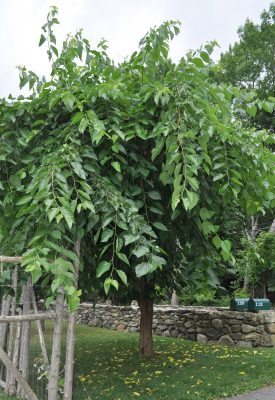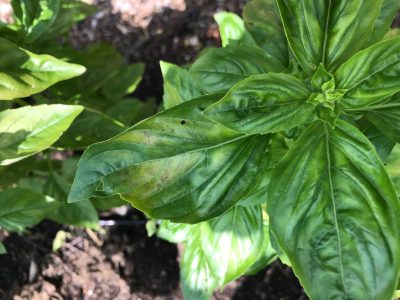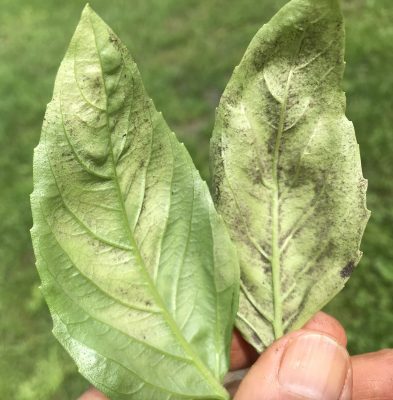Battle for Figs: Victory
Some History
I don’t know the score over the years, but this year’s victory is mine. The battles have been with scale insects, both armored scales and their cousins, mealybugs (but rarely both in the same year), on my greenhouse fig plants.
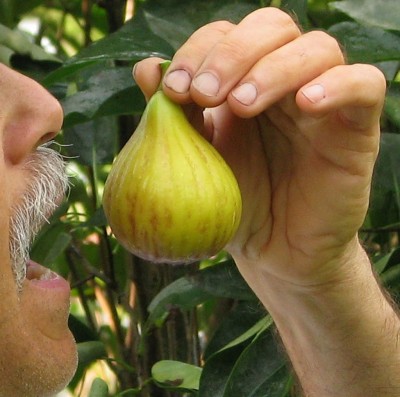
Those fig plants are planted in the ground in a minimally heated greenhouse, where winter temperatures can sink to about 35°F. The oldest of these plants have trunks 8 inches in diameter. They thrived for years without any pest problems, scale of otherwise. A few years ago, the insects made their appearance, sometimes ruining almost the whole crop.
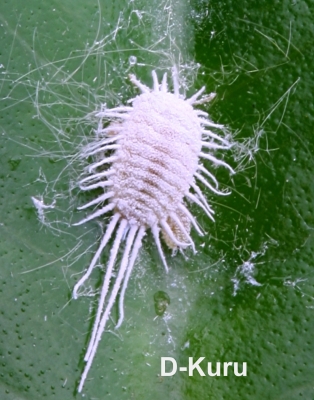
Over the years I fought them in various ways. One year it was spraying the dormant plants with alcohol. Another year it was, more aggressively, scrubbing trunks and stems of dormant plants with a toothbrush dipped in alcohol. Ants herd and protect scale insects, so another year I fenced the ants off the plants with a band of masking tape coated with forever (almost) sticky Tangletrap around the trunk of each plant.
An expensive but short-lived success was the two releases of the predatory ladybird beetle Cryptolaemus montrouzieri and the parasitoid wasp Anagyrus pseudococci.
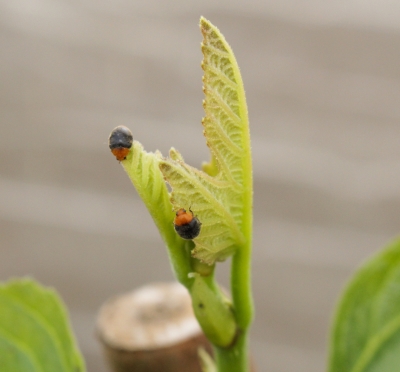
Mealybug destroyer
These biocontrol helpers ended up valuing each fig at about a dollar, still worth it. I screened all openings in the greenhouse, hoping to perennialize them inside. (It was not effective.)
Battle Plan, Done
So this year I tried a multipronged approach.
The biggest change was, rather than growing the figs as bushy trees, training them as espaliers. Espalier is the training of plants to an orderly, usually two-dimensional form both for beauty and, in the case of fruit plants, for good production of high quality fruit. For my figs, an additional benefit would be that each plant would only have one point of contact — its trunk — with the ground. IA band of masking tape coated with Tangletrap would be a roadblock on the ant highway. (Plus the look of the plants always elicits a “Wow” from visitors.)
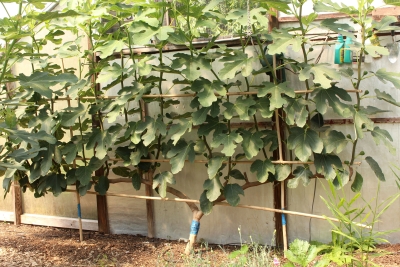
The fig plant growing near the greenhouse endwall has a short trunk that, after rising to about 18 inches from ground level, bifurcates into two, self-supporting horizontal arms extending parallel to the wall in opposite directions. At the head of each of the south beds, a fig tree is planted each of whose trunk is terminated by just a single, self-supporting, horizontal arm reaching down the bed to the sidewall. With just a trunk and one or two arms, thoroughly scrubbing down the dormant plant with alcohol is a relatively quick job. Quick enough to prevent 2 or 3 scrubbing before plants resume growth in early spring from becoming tedious.
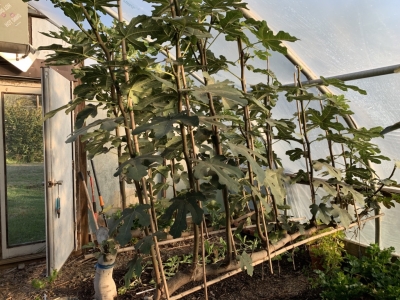
Another nice feature of this training system is that pruning the plants at the end of the season is a no-brainer. Vertical shoots that rise up from the horizontal arms are thinned to keep neighboring shoots 8 inches apart and helped along in their vertical growth by being trained to pieces of bamboo attached to the greenhouse roof. (Yes, an ant could walk up the wall and across the roof of the greenhouse and then down the bamboo to get at the plants but they are either not that smart or energetic; it hasn’t happened.)
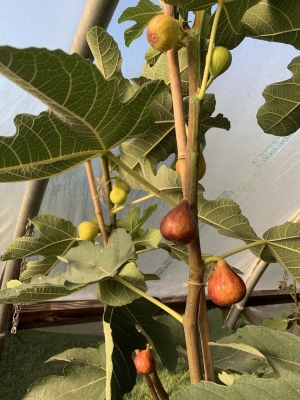
A little later in the early part of the greenhouse growing season I gave the plants some dowsings with neem oil. I’m not sure how effective the neem component is but “horticultural oil” itself is effective in fighting off scale insects.
A ring of cinnamon around the base of each plant provided further disincentive to the ants, who will not cross a cinnamon line. The cinnamon and the Tangletrap did need renewal once per season.
As new fig shoots soared skyward near the greenhouse roof, I used a pole pruner to prune out the top of the growing shoot. Side branches, of course, then grew, and I periodically had to to hack them back also.
Uh Oh, But All Still Good
Everything was copacetic and we were harvesting figs, which formed along the vertical stems at the juncture of almost every leaf. Then, in late August I noticed some mealybugs on one plant. Time for Cryptolaemus montrouzieri again. I released them in early September and we were back in business, harvesting large handfuls of three different varieties of delciously sweet figs — San Piero, Brown Turkey, and Rabbi Samuel — daily.
And then, just today, I noticed armored scales on the plants, and a few ants! I’m not sure how the ants are getting onto the plants, but one possible “benefit” of the armored scales is hardly any mealybugs. Perhaps they can’t coexist.

All the measures I took against mealybugs should also be effective against the armored scales, except for the Cryptolaemus montrouzieri. Their predator Aphytis melinus, also known as the Golden Chalcid, has been effective against armored scales.
I’m not taking action. With less sunlight and cooler temperatures the figs trees have slowed down, running out of new stems on which to hang fruit. No matter; it’s been a good season of fresh figs.


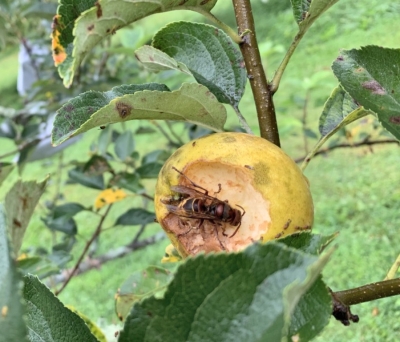
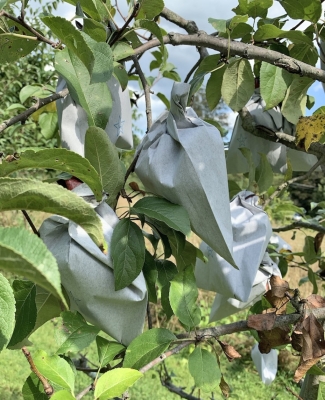
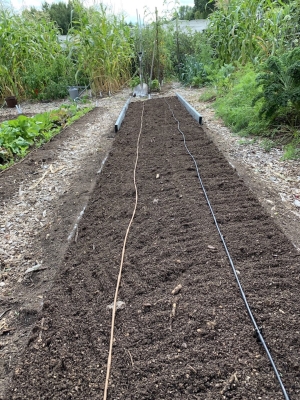
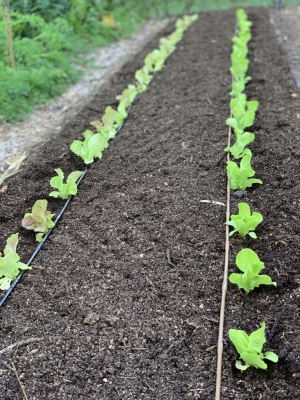

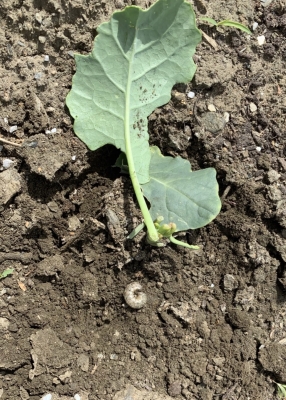
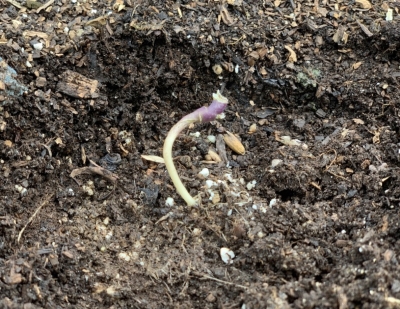
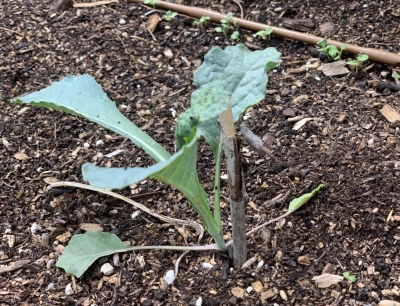
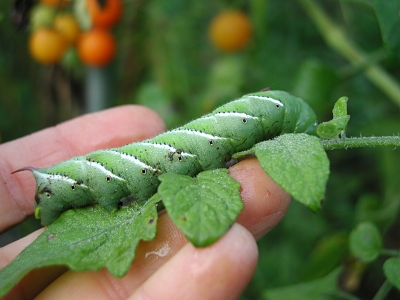
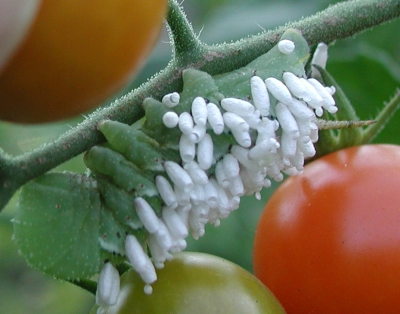
 A close eye is needed on cabbage and its kin because one day there’ll be no damage and next time you look, leaves are riddled with holes and poop.
A close eye is needed on cabbage and its kin because one day there’ll be no damage and next time you look, leaves are riddled with holes and poop.
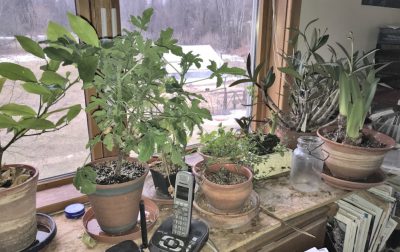
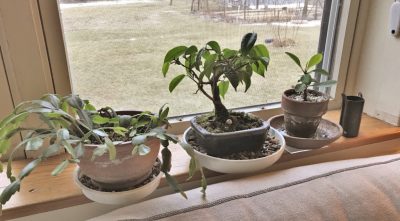
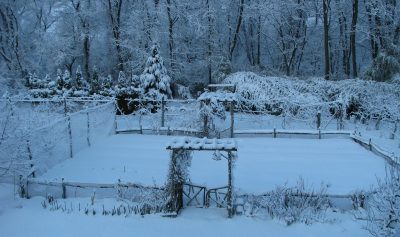
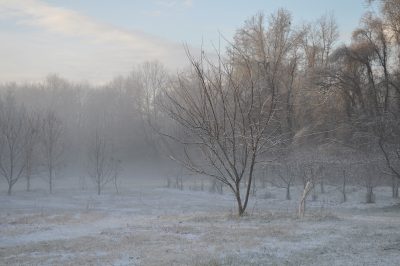
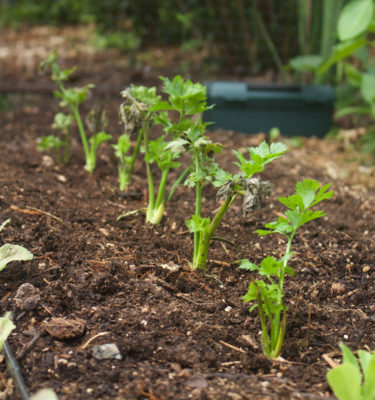
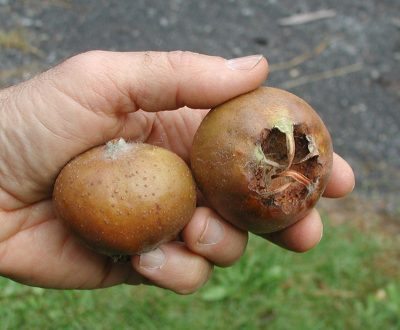 Usually the plant is pest-free but a few years ago something, perhaps a fungus, perhaps an insect, started attacking it, leaving the flesh dry and crumbly. I have yet to identify the culprit so that appropriate action can be taken.
Usually the plant is pest-free but a few years ago something, perhaps a fungus, perhaps an insect, started attacking it, leaving the flesh dry and crumbly. I have yet to identify the culprit so that appropriate action can be taken.
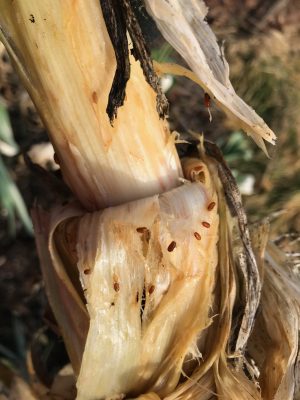
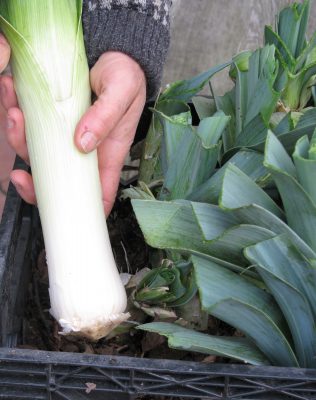
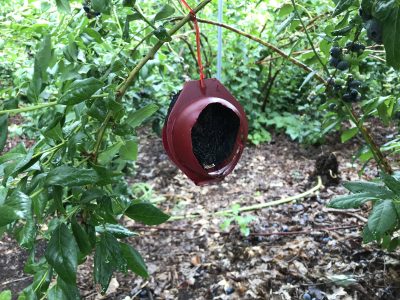
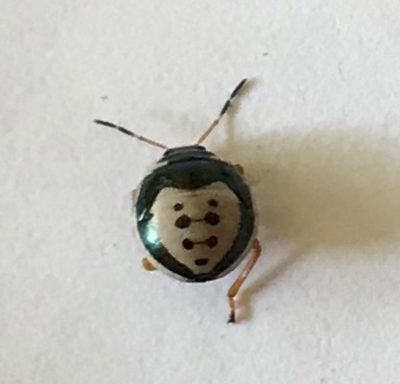
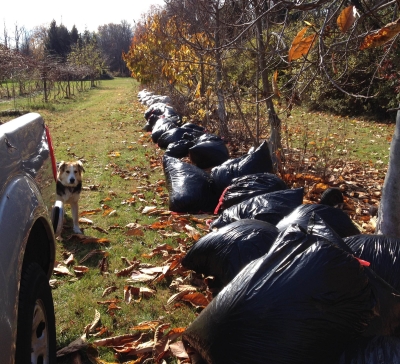
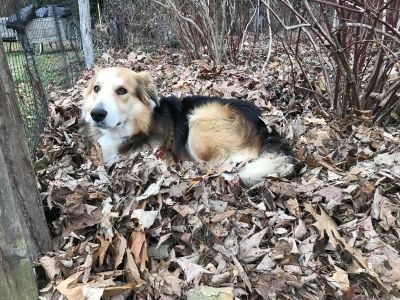
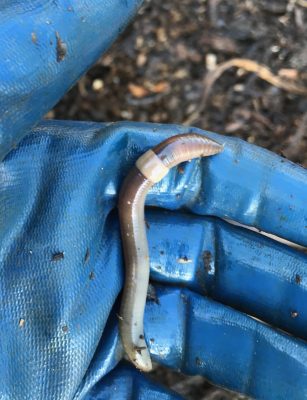
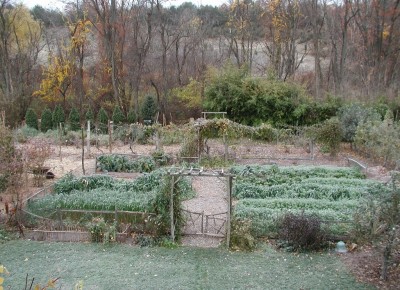 Weeds have been removed from the paths and the beds, and spent plants have been cleared away. What remains of crops is a bed with some tall stalks of kale that were planted back in spring. Yet another bed is home to various varieties of lettuce interplanted with endive, all of which went in as transplants after an early crop of green beans had been cleared and the bed was weeded, then covered with an inch depth of compost. Also still lush green is a bed previously home to edamame, which was subsequently weeded, composted, and then seeded with turnips and winter radishes back in August.
Weeds have been removed from the paths and the beds, and spent plants have been cleared away. What remains of crops is a bed with some tall stalks of kale that were planted back in spring. Yet another bed is home to various varieties of lettuce interplanted with endive, all of which went in as transplants after an early crop of green beans had been cleared and the bed was weeded, then covered with an inch depth of compost. Also still lush green is a bed previously home to edamame, which was subsequently weeded, composted, and then seeded with turnips and winter radishes back in August.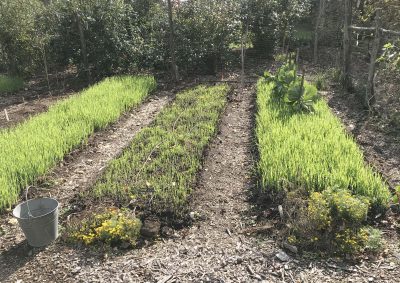
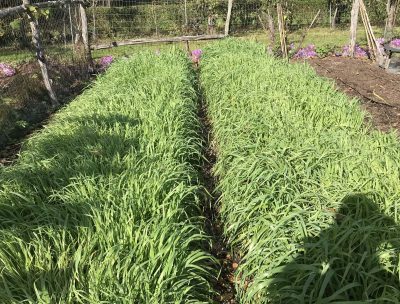 Below ground, oat roots pull up nutrients that rain and snow might otherwise leach away into the groundwater.
Below ground, oat roots pull up nutrients that rain and snow might otherwise leach away into the groundwater.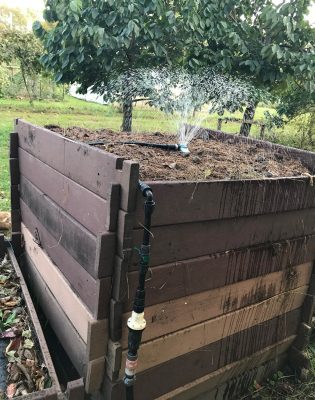
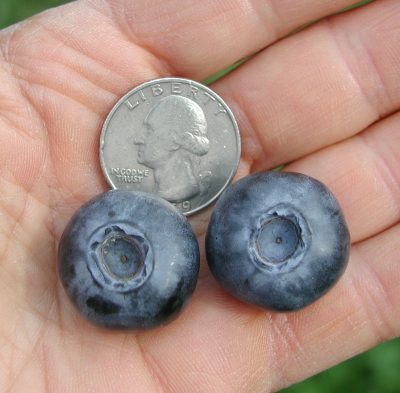
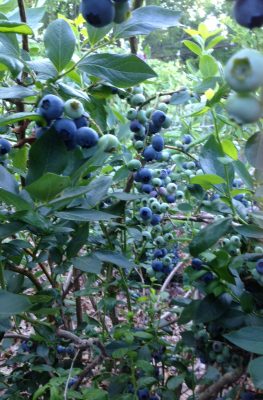 As I write, in September, the variety Elliot is still bearing ripe berries.
As I write, in September, the variety Elliot is still bearing ripe berries.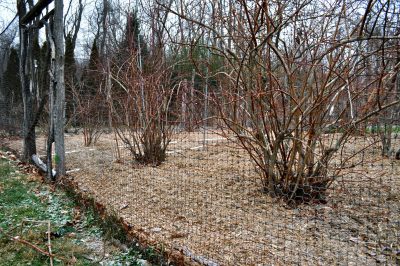
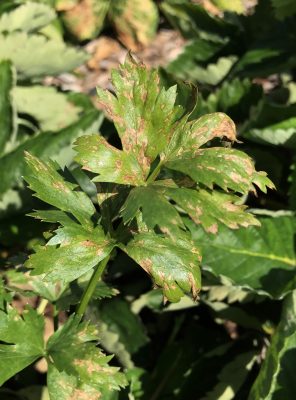 Last fall I thoroughly cleaned up diseased plants, even planted some celeriac this year in the greenhouse. Failure occurred both outdoors and in the greenhouse, although lots of rain and heat could have helped (the fungi or bacteria, not me).
Last fall I thoroughly cleaned up diseased plants, even planted some celeriac this year in the greenhouse. Failure occurred both outdoors and in the greenhouse, although lots of rain and heat could have helped (the fungi or bacteria, not me).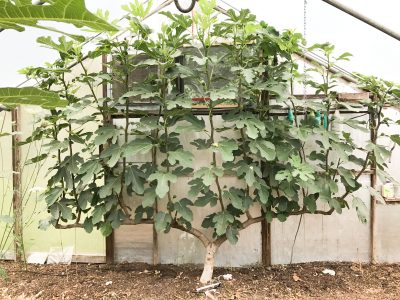 Left to its own devices, a fig can grow into a tangled mess. In part, that’s because fig trees can’t decide if they want to be small trees, with single or a few trunks, or large shrubs, with sprouts and side branches popping out all over the place.
Left to its own devices, a fig can grow into a tangled mess. In part, that’s because fig trees can’t decide if they want to be small trees, with single or a few trunks, or large shrubs, with sprouts and side branches popping out all over the place.
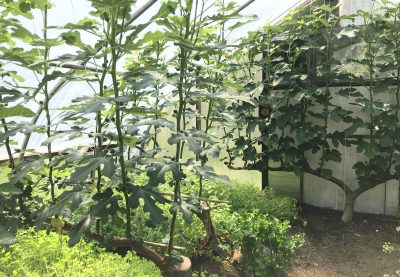 All that despite my attempts at control by going over plants with a toothbrush dipped in alcohol, oil sprays, and sticky barriers to keep ants, which “farm” these pests, from climbing up the trunks.
All that despite my attempts at control by going over plants with a toothbrush dipped in alcohol, oil sprays, and sticky barriers to keep ants, which “farm” these pests, from climbing up the trunks.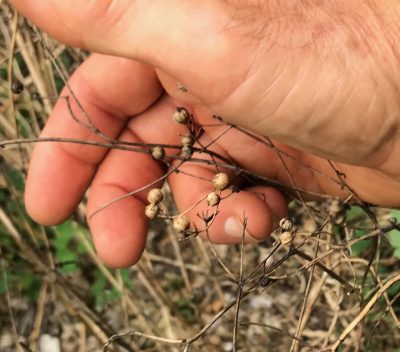 Those seeds will drop and germinate in the cooler temperature a few weeks hence. But I need cilantro now.
Those seeds will drop and germinate in the cooler temperature a few weeks hence. But I need cilantro now.
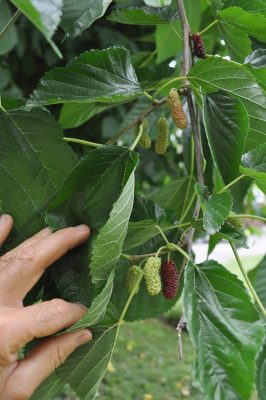 Birds also eat fruit for their juiciness, and the past weeks and weeks of abundant rainfall probably satisfied some of that need. The only other year I had plenty of mulberries — much more than this year — was a few years ago when 17-year cicadas descended upon here. All summer I awoke to their grating cacophony, but did feast on mulberries as birds feasted on the cicadas.
Birds also eat fruit for their juiciness, and the past weeks and weeks of abundant rainfall probably satisfied some of that need. The only other year I had plenty of mulberries — much more than this year — was a few years ago when 17-year cicadas descended upon here. All summer I awoke to their grating cacophony, but did feast on mulberries as birds feasted on the cicadas.